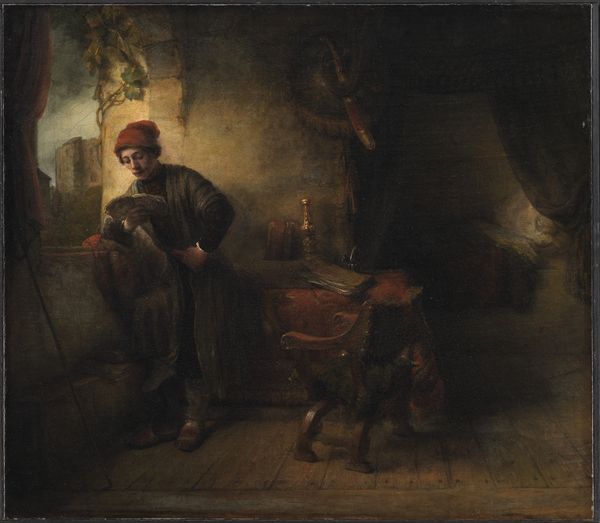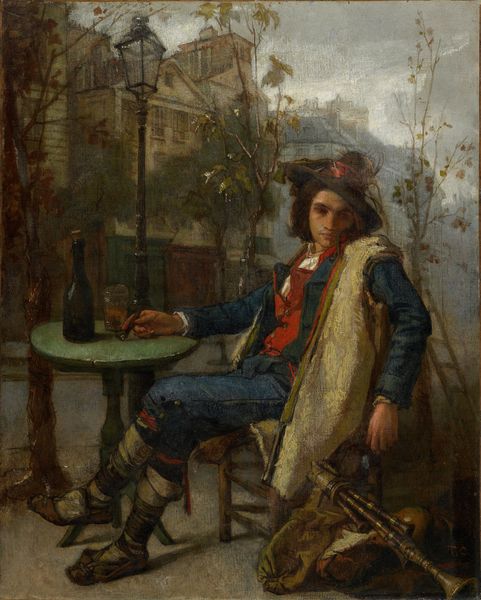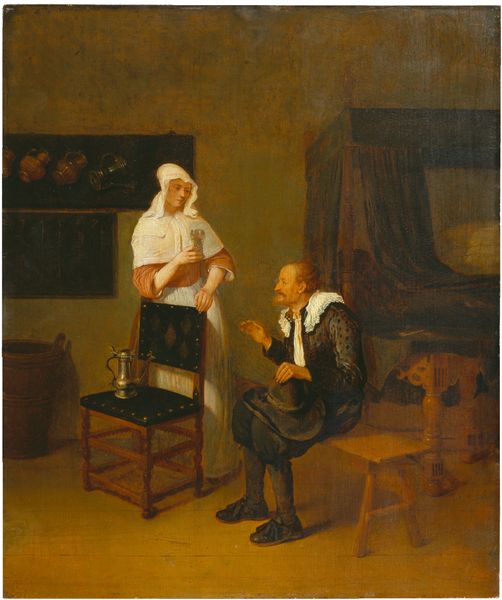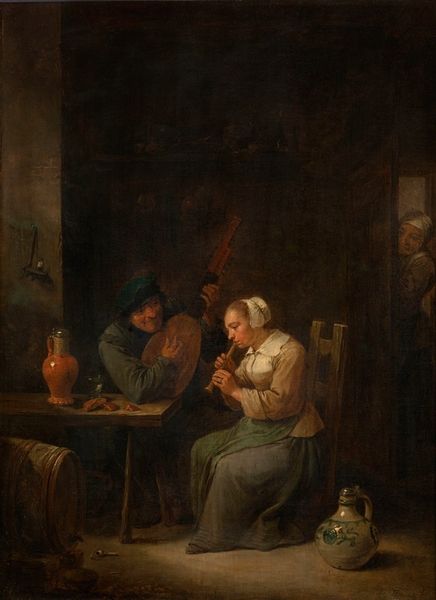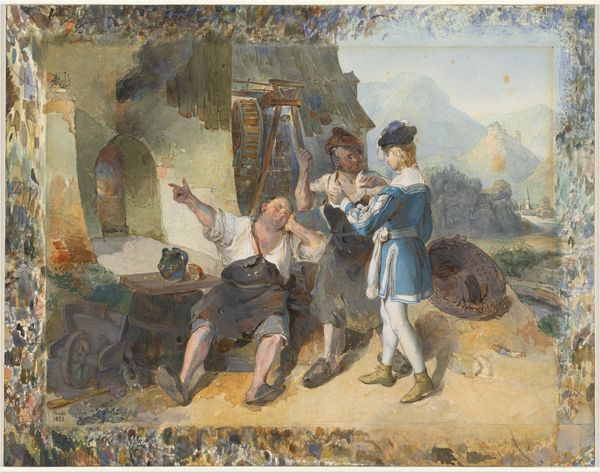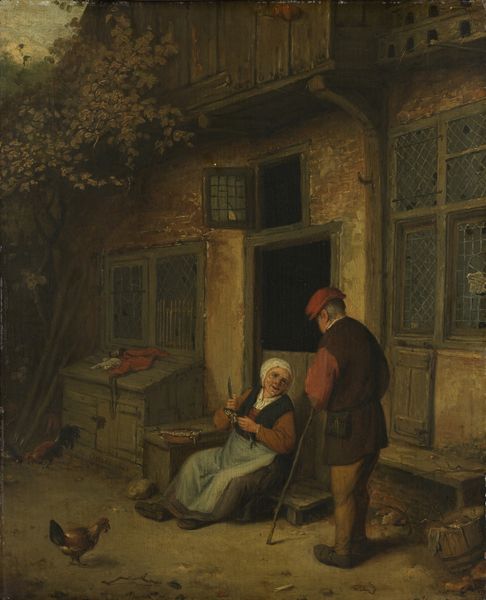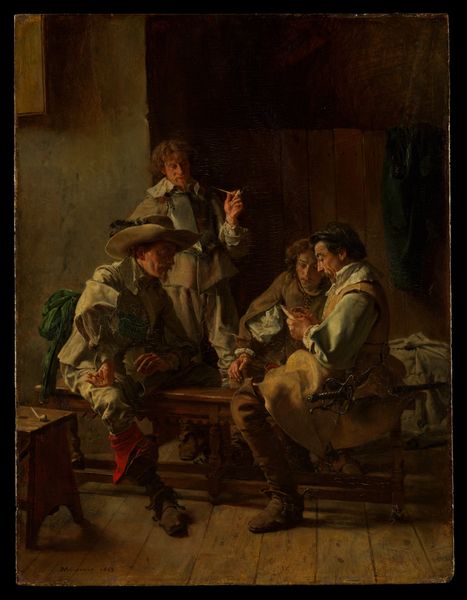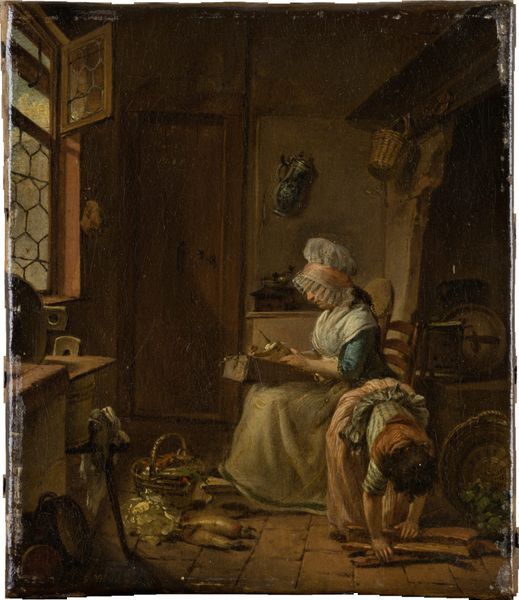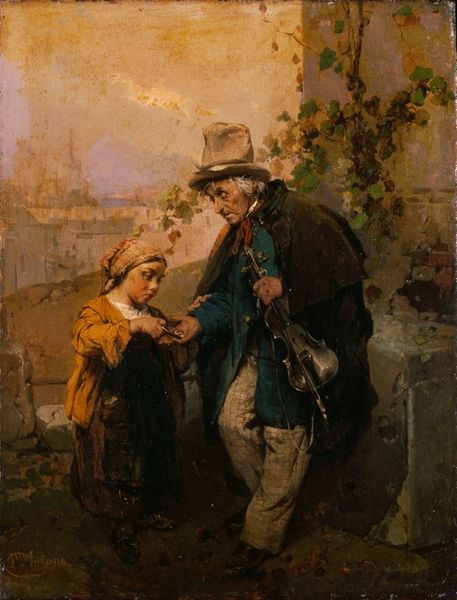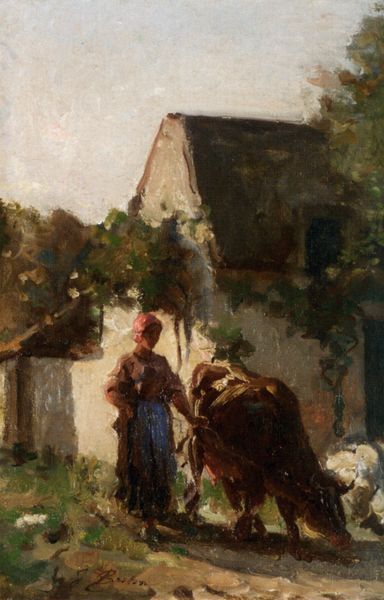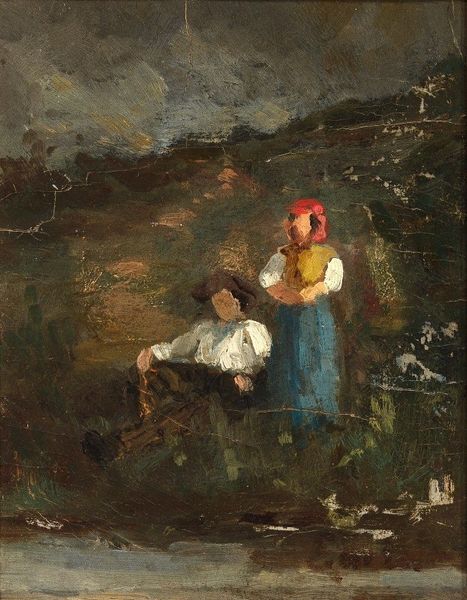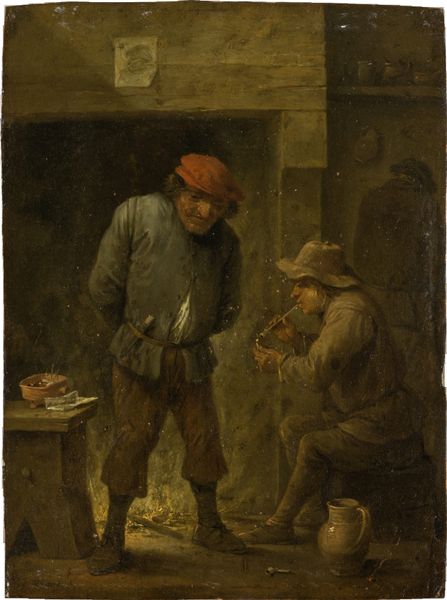
painting, oil-paint
#
portrait
#
painting
#
oil-paint
#
landscape
#
romanticism
#
15_18th-century
#
painting painterly
#
genre-painting
#
impressionist inspired
#
building
Dimensions: 29.5 x 22.8 x min. 0.8 cm
Copyright: Public Domain
Curator: This painting, created around 1790 by George Morland, is called "Peasants in front of a Hut." It offers an intimate glimpse into rural life. Editor: My immediate sense is one of relaxed intimacy; the tones are subdued, warm, and familiar. There's an air of conviviality, isn't there? The atmosphere feels comforting, like a candid snapshot capturing an ordinary, yet meaningful, moment. Curator: Precisely! Morland often depicted such genre scenes, idealizing the rustic existence while, arguably, ignoring its harsher realities. The building, almost dissolving into the murky background, frames the central interaction. Think about the positioning: an informal, public exterior, that somehow still implies intimacy and personal exchange. What narrative threads do you perceive interwoven here? Editor: I find myself focusing on the shared drink and pipe, symbolic gestures that suggest connection and communal experience. We can't see the details, but these symbols hint at a ritual of social bonding within the painting. This era really emphasized everyday object, with symbolism becoming more widely seen in paintings that showcased daily activities. Curator: Exactly! We might also ask ourselves: are we truly seeing unvarnished, accessible representations of the lives of ordinary people? What societal dynamics may be subtly embedded? Think of the late 18th-century, the era's art was shaped and constrained by societal ideas about race, labor, and gender, and by deeply asymmetric relationships of power. How might these societal hierarchies permeate Morland’s canvas? Editor: I hadn’t quite seen it that way initially, but I see your point about encoded power dynamics and now note the body language; one peasant looks down on the other, potentially highlighting social status or hierarchies of skill within this tiny rural community. Even with their limited ability, their relationship feels like a micro representation of their society, its roles and its systems. Curator: The "everyday" carries ideological weight. How representations of labor and leisure get packaged for consumption speaks volumes about that historical period. The romanticising, which on the surface suggests a shared space is now seen as somewhat loaded. Editor: Ultimately, Morland provides us with something far from definitive in many ways. It offers a reflection of his time as seen through his own specific viewpoint – a vision where social bonding intertwines with coded cultural meaning that demands deeper scrutiny. Curator: An enduring scene that presents a simple scene, yet echoes complex societal relations that impact us even today. Editor: It seems art continues to act as a mirror, reflecting both personal sentiments and prevailing world-views throughout eras.
Comments
No comments
Be the first to comment and join the conversation on the ultimate creative platform.

